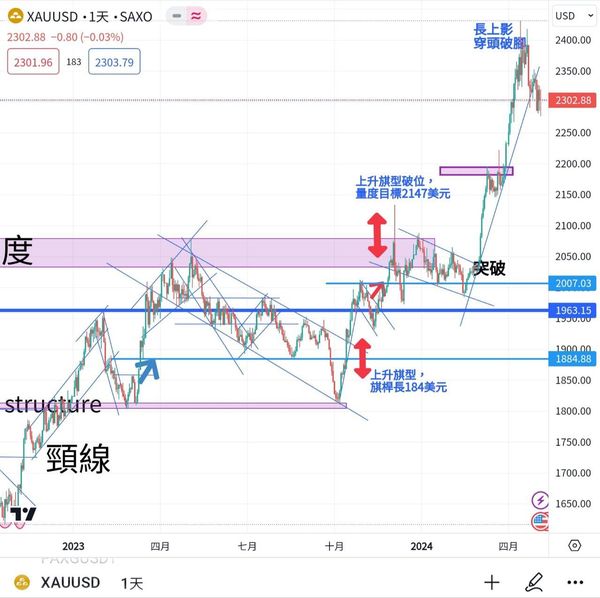Gold turned to a low level, and interest rate cuts are expected to support the low rebound of gold prices.
Since 2430, the price of gold has fallen for the second week in a row, and technical resistance has formed above 2400, which hinders the mid-term upward trend of gold price. In addition, the most tense time in the Middle East has passed, and the demand for hedging has decreased, which also makes the high position of good positions more cautious, and there is little motivation to pursue it above. In the past two weeks, as long as there is no further conflict between Israel and Iraq on Saturday and Sunday, it is convenient for gold prices to start to fall sharply at the beginning of the week before stabilizing and rebounding.
Last week, the market focused on the Federal Reserve's meeting on interest rates and labor data. The market had high expectations that the United States would keep interest rates unchanged. However, at the press conference after the meeting, Powell made it clear that the next action would only reduce interest rates and not raise interest rates, and resolutely supported the gold price to stabilize above 2300. On the labour market, the performance was far from satisfactory, with both small non-agricultural and non-agricultural sectors falling below 200,000, and the unemployment rate rising to 3.9%, citing the slowdown of the labour market, which made the market even more hopeful that the United States would start to cut interest rates as early as September, sweeping away the recent market doubts about high inflation and high interest rates.
The price of gold is in the struggle of ups and downs. After the high price has retreated more than 100 dollars, it tends to be sorted out. Before it rises again, it needs more time to consolidate. This week, the focus of finance and economics is on discussing interest rates in Britain and Australia, while there are few important economic data released in the United States. The gold market may be more dependent on technical fluctuations and market conditions. Let's refer to each other.
Previous Article Next Article


 Whatsapp
Whatsapp Telegram
Telegram
